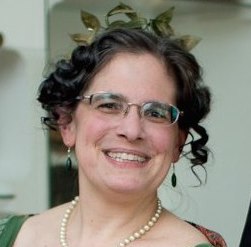A telegraph from London updates Americans on the early twentieth-century dance scene in London:
Waltz Popular in London
London, Jan. 2. — The lancers, quadrille, polka, and mazurka, once popular dances, have now almost disappeared from the ball programmes of fashionable London. The American two-step to some extent has taken the place of the polka, but the dance most in favor is the waltz, which, according to an Italian expert, the English people seem to dance like persons in a dream, so slowly is the time usually taken.
— The New York Times, January 3, 1909
English dance teachers felt that this state of affairs called for high-level assistance, as a later article alerts New Yorkers:
Thinks Waltz Overdone
English Teachers Want King to Lead in Introducing Other Dances
London, March 13. — R. N. Compton, President of the Imeperial Society of Dance Teachers, has appealed to the king to assist the movement for breaking the exclusive popularity of the waltz. He says:
“If the King would command that one new dance be included in the programme of each State ball he would set a vogue for all the ballrooms of the kingdom. The mazurka, schottische, polka, and waltz cotillion all have their places in a properly balanced programme, and on such occasions of ceremony as a State ball arranged in honor of some distinguished visitor I would suggest that some one should arrange to provide dances of a former period, as was done at the ball given by the Kaiser in Berlin in honor of the King. The gavotte, minuet, and pavane suggest themselves, and, in addition, a new dance which would become the dance of the year.”
The last State ball, on July 10, was made up as follows: Waltzes, 10; quadrilles, 3; polkas, 2; galops, 1. Mr. Compton suggests instead: Waltzes, 6; quadrilles, 2; polkas, 2; mazurka, 1; polonaise, 1; schottische, 1 or 2; two-step, 1; waltz-minuet, 1; and a new dance, 1.
— The New York Times, March 14, 1909
Top-down dictation of dance popularity has never worked out all that well, and within a few years most of these dances — with the notable exception of the waltz — would be thoroughly out of favor as the new ragtime dances became popular.
Also notice that Mr. Compton quietly slid a waltz-minuet into his suggested ball programme. I’m sure the fact that he choreographed a waltz-minuet of his own had nothing to do with this…
Both articles are © The New York Times, though 1909 articles would be out of copyright in the U.S. by now. Click the article titles to be taken to the original articles in the invaluable The New York Times archive.

